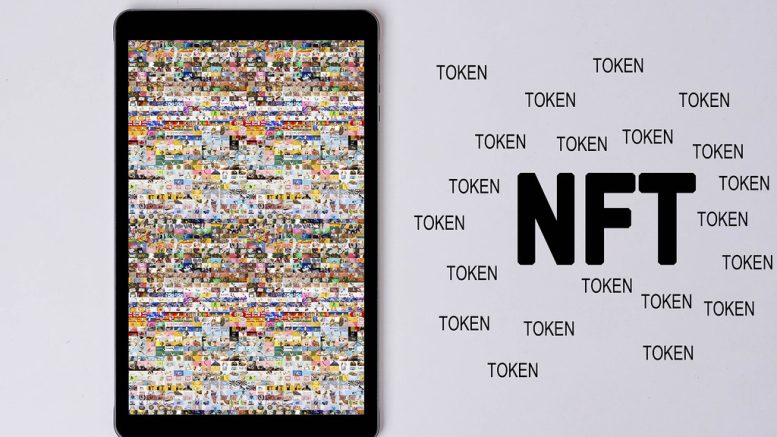Introduction
Non-fungible tokens, in other words, NFT is a digital token or digital asset, which is one of the forms of open transactions on the Ethereum blockchain. It is a transferable digital token. (Frye, 2022) Its explosive growth in the field of digital art has attracted widespread attention in recent years.
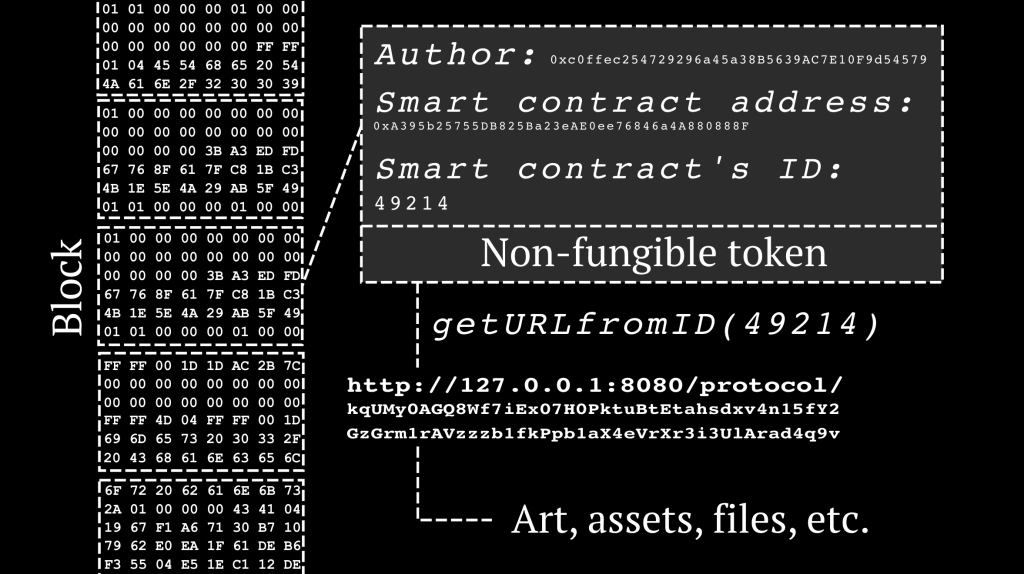
NFT diagram by Vectorization: Alhadis is marked with CC0 1.0
Since NFT is a form of securitization organization that does not cover ownership, it may shake and replace the solid legal status of intellectual property. (Kraizberg, 2023)
This article explores the rise of NFT art, its challenges to traditional ownership concepts, and the complexity of its relationship with intellectual property. It also emphasizes the transfer and importance of creative ownership, and proposes clearer online and offline legal claims and considerations of ambiguity that are beneficial to the future of NFT.
Part I: History of NFT Art and Its Impact on Creative Ownership
In the new digital era, that is, in transitioning from Web 2.0 to Web3, surrounded by the metaverse and virtual world, decentralized ownership is the general trend. NFT in the art industry has attracted much attention from auction houses, galleries and potential collectors and investors in this new digital environment. (Belk et al., 2022)
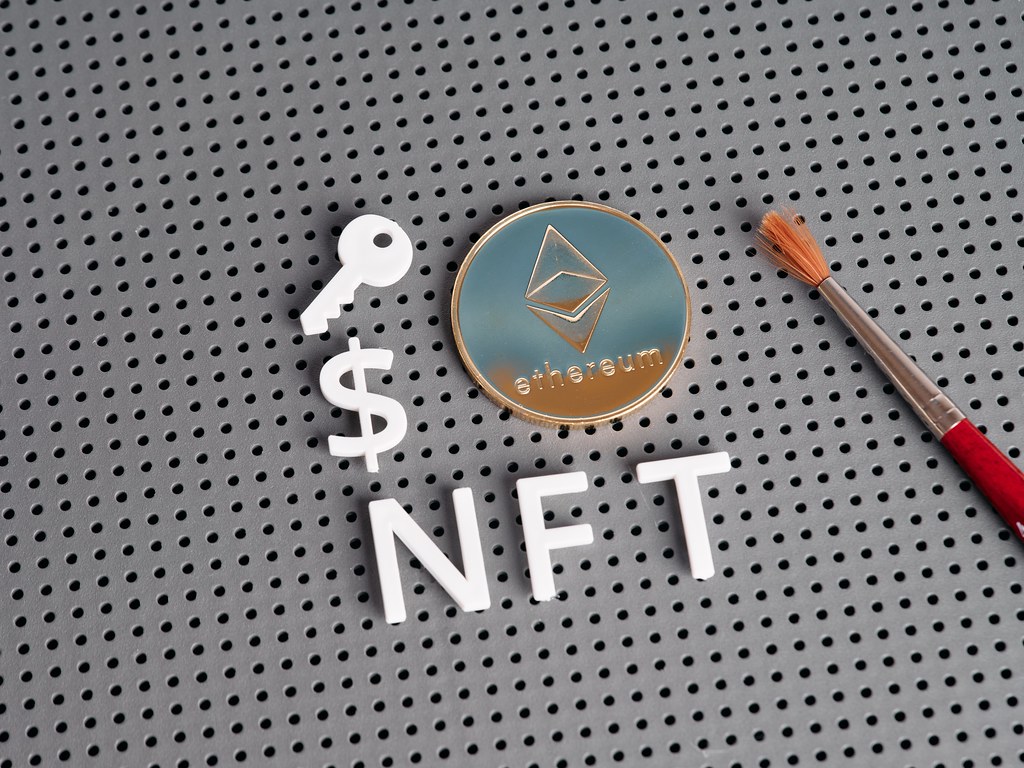
NFT 2 © 2022 by Focal Foto is licensed under CC BY-NC 4.0
NFTs reinvent ownership in a novel way. The impact on creative ownership helps artists change and certify ownership online by gaining recognition for their work. In the early days, Monegraph, as the predecessor of NFT, was already contributing to the distribution of digital art before the metadata treasure of NFT was mined. (McCoy, 2022)
Digital artists aren’t the only ones who can get certified for online monetization this way. In Protecting the Rights of Street Art, SAMendelson-Shwartz and others discuss that urban art can also redefine ownership, extending the idea that NFT is not restricted by space. The Street-Art-NFT-System (SA-NFT) applies public encryption technology to verify ownership and prevent street art from being abandoned, adding to the digital footprint of urban art. (2023)
Using street artists as a case study, it becomes evident that digital artists encounter restrictions in terms of their engagement and acknowledgement within the conventional art market, and vice versa. Bitcoin’s prospects for blockchain have laid the foundation for the emergence of NFTs. Before this, it was difficult for artists to tokenize their works to have unique digital value. NFT ensures that artists obtain ownership rights and corresponding compensation effects during the resale process of their works. (Belk et al., 2022) Compared with Bitcoin, the scarcity and uniqueness of NFT are reflected in their independent storage in blockchain partitions:
Overall, NFT’s transformative impact on creativity comes from the tapping of one’s own potential, the empowerment of artists and the re-evaluation of creativity.
Part II: The Intricate Relationship Between Copyright and NFT Art
NFT was born as a new form of digital ownership, but its emergence has brought about a transformative impact on existing intellectual property rights, triggering ethical and legal concerns in the field of NFT art. Because NFT is just some encrypted metadata, that is, “ownership” only contains symbolic meaning, not substance. (Fitzgerald, 2022)
This leads to the complexity of NFT copyright issues. The common controversies can be seen from the misunderstanding that the consortium Spice DAO purchased the adaptation of “Dune” and wanted to spin it into a TV series. Tangible assets and intangible property rights need to be viewed in two. Buyers have limited rights to artworks. NFT only gives a unique digital ownership certificate, but does not give ownership of the original copyright. If not taken seriously, it may lead to legal crises and copyright disputes. NFTs confer a dimension of ownership without conferring exclusive control or authority over the underlying asset. This aspect can be conceptualised as the intangible flow of assets; however, it is essential to note that this flow primarily pertains to the exchange of monetary value and does not inherently generate supplementary cash flows (Kraizberg, 2023)
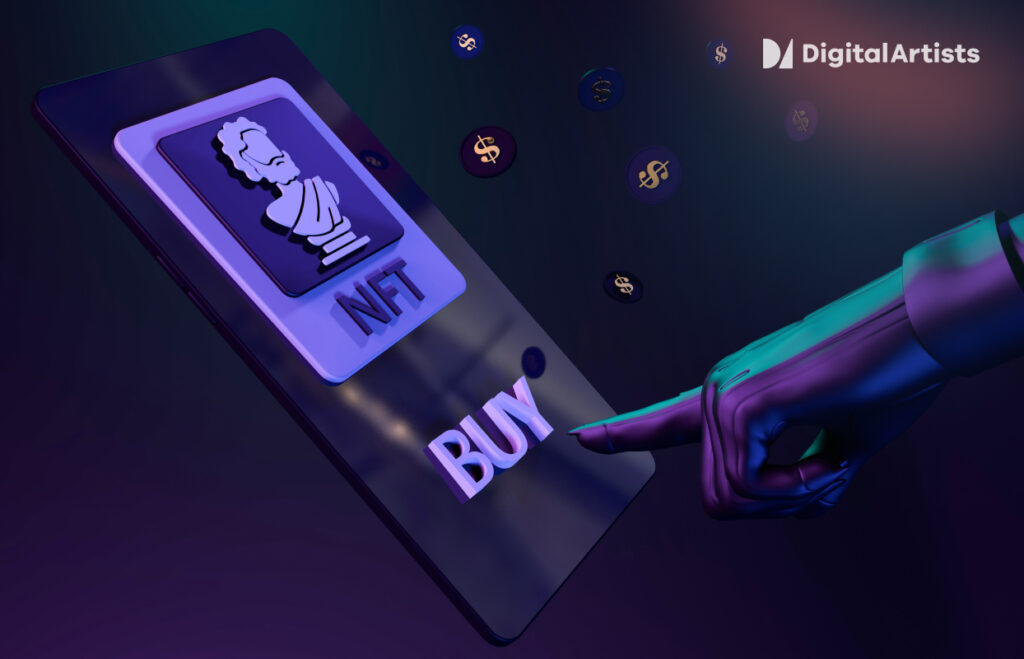
Futuristic NFT concept to earn, video games, technology, metaverse and crypto. 3d rendering © 2021 by Crazy_Dark_Queen is licensed under CC BY 4.0
These cases have called into question the transparency and clarity of the legal framework of NFT in the real world. How to carefully handle the disconnect between the ownership and control of the seller (artist) and the buyer (collector) has far-reaching ethical considerations.
Decisions about what constitutes true ownership must be made with both protection for the creator and respect for the collector in mind. For buyers who are confused about ownership and what they are purchasing, significant infringement issues can arise.
For example, one of the most collectable artworks generated by a calculator, CryptoPunks, was copied without authorization by the NFT trading platform Opensea and traded as a new artwork due to its ability to be easily derived and reproduced.
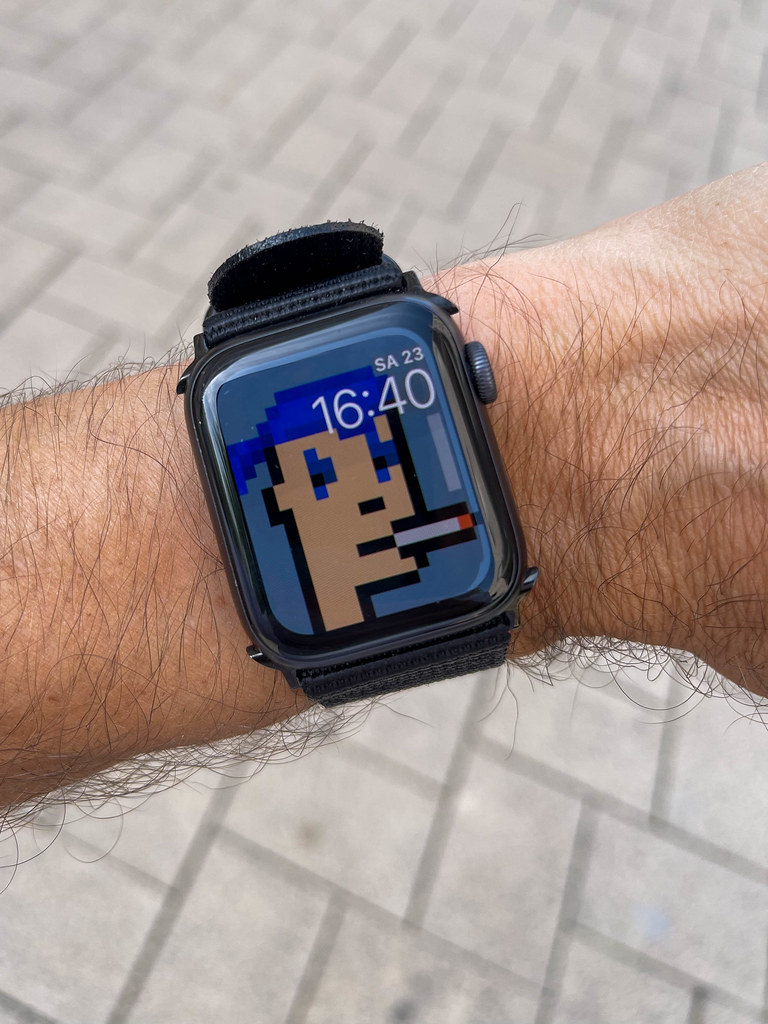
NFT as a watch face on a man’s Apple Watch with CryptoPun © 2022 by Marco Verch is licensed under CC BY 4.0
The person in charge of Opensea responded tit-for-tat, saying that it was impossible to judge the extent of imitation as an infringement of the original work, and it was impossible to verify it in the context of the ambiguity of infringement in the NFT art field. (Valenzuela, 2021)
The ease of copying CryptoPunks brings about intractable dilemmas regarding the imbalance of ownership and control in the NFT ecosystem. The copyright dispute in this case has raised questions about the boundaries of NFT. Copyright defects have caused traditional copyrights to be unable to solve the uniqueness of NFT issues, and the intricate nature of digital rights continues to face challenges. (Frye, 2022)
Part III: Intellectual Property Challenges and the Future of NFT Art
In the future, in the ever-changing virtual universe era, NFT art will also encounter more challenges in the future. The problems mentioned above for NFT require supplementary legal aspects to address the imperfect intellectual property planning of NFT.
Europe has proposed a way to combine blockchain smart contracts for digital asset management through the Mediaverse approach. The principle is to define the ownership, licensing terms and royalties of artworks, retain readability and accessibility while adding legal enforcement and ensuring fair distribution of profits to creators. (Ferro et al., 2023) In addition, legal issues can be well considered for split-chain management. (Fitzgerald, 2022)
Setting up a safe harbor, i.e. the platform hosting the NFT, should have the technical capabilities to delete the NFT if necessary, ensuring access to digital assets in the event of platform issues is critical to maintaining user trust. This is a collaborative effort within the NFT art community that can and should be made to address intellectual property challenges. To better protect artists’ rights, where a contract is involved, a breach of contract claim may arise when a limited license is breached. It’s also crucial to clearly communicate terms to buyers. (Sullivan, 2022) As NFTs continue to dominate the digital marketplace, content owners and platforms will need to navigate these complexities.
Conclusion
It is undeniable that NFT has completely redefined and challenged the existing intellectual property landscape. However, the complicated disputes caused by its copyright issues require a clearer legal system to resolve.
Blockchain technology can be considered an art form in itself. Each transfer is like an artist’s ever-mixing palette, highlighting the complexities of digital ownership but also pushing art to a higher level of completion, alluding to increased trust and transparency. Although different NFT artworks serve as different nutrients, they all nourish the NFT digital ecosystem environment at the same time. But we are still in the gathering stage of the development of Internet decentralization. (Valenzuela, 2021)
The intellectual property challenges and potential issues faced by NFT for both artists and collectors need to be further discussed in the future and work together through regulatory, legal and NFT community cooperation to make this art ecosystem more prosperous.
References:
Belk, R., Humayun, M., & Brouard, M. (2022). Money, possessions, and ownership in the metaverse: Nfts, cryptocurrencies, web3 and wild markets. Journal of Business Research, 153, 198–205. https://doi.org/10.1016/j.jbusres.2022.08.031
Castor, A. (2022, October 9). Early history of nfts, part 2: Monegraph, spells of Genesis, Rare Pepes. Amy Castor. https://amycastor.com/2022/05/28/early-history-of-nfts-monegraph-spells-of-genesis-rare-pepes/
Doe, J. (2023, September 26). NFTs: Legal risks from “Minting” art and collectibles on Blockchain. Quinn Emanuel Trial Lawyers – Quinn Emanuel Urquhart & Sullivan, LLP. https://www.quinnemanuel.com/the-firm/publications/nfts-legal-risks-from-minting-art-and-collectibles-on-blockchain/
Ethereum.What is Ethereum?. ethereum.org.https://ethereum.org/en/what-is-ethereum/
Ferro, E., Saltarella, M., Rotondi, D., Giovanelli, M., Corrias, G., Moncada, R., Cavallaro, A., & Favenza, A. (2023). Digital Assets Rights Management through smart legal contracts and smart contracts. Blockchain: Research and Applications, 4(3), 100–142. https://doi.org/10.1016/j.bcra.2023.100142
Fitzgerald, L. (2022, March). Splitchain: Reconciling blockchain and the law. Lander & Rogers. https://www.landers.com.au/legal-insights-news/splitchain-reconciling-blockchain-and-the-law
Foley, C. (2022, March 11). You spent $3.5m on what?! Spice DAO, Dune, NFTs and copyright. MinterEllison. https://www.minterellison.com/articles/spice-dao-dune-nfts-and-copyright
Frye, B. L. (2022). After Copyright: Pwning NFTs in a Clout Economy. The Columbia Journal of Law & the Arts, 45(3), 341–352. https://doi.org/10.52214/jla.v45i3.10008
Kraizberg, E. (2023). Non-fungible tokens: A bubble or the end of an era of intellectual property rights. Financial Innovation, 9(1). https://doi.org/10.1186/s40854-022-00428-4
Larva Labs. (2023). Cryptopunks. https://larvalabs.com/cryptopunks
McCoy, K. (2022). Art and nfts: past and future. The Columbia Journal of Law & the Arts, 45(3), 353–360. https://doi.org/10.52214/jla.v45i3.10009
Mendelson-Shwartz, E., Shwartz, O., & Mualam, N. (2023). Protecting street art rights using an NFT-based system. Journal of Urban Technology, 30(3), 81–100. https://doi.org/10.1080/10630732.2023.2180983
Mikhaliova, T. N. (2023). Legal support for digitalization of art. RUDN Journal of Law, 27(1), 117–134. https://doi.org/10.22363/2313-2337-2023-27-1-117-134
OpenSea. OpenSea, the largest NFT Marketplace. https://opensea.io/
Sullivan, S. (2022). “nfts: future or fad?” excerpts from a practical discussion of NFT use cases and copyright concerns raised by NFT offerings. The Columbia Journal of Law & the Arts, 45(3), 360–379. https://doi.org/10.52214/jla.v45i3.10011
Valenzuela, V. (2021, August 19). Cryptophunks: CryptoPunks parody or copycat? – superrare magazine. Superrare Magazine. https://superrare.com/magazine/2021/08/19/cryptophunks-cryptopunks-parody-or-copycat/
Wall Street Journal. (2021, March 11). NFTs are fueling a boom in digital art. here’s how they work | WSJ. YouTube. https://www.youtube.com/watch?v=zpROwouRo_M&ab_channel=WallStreetJournal
